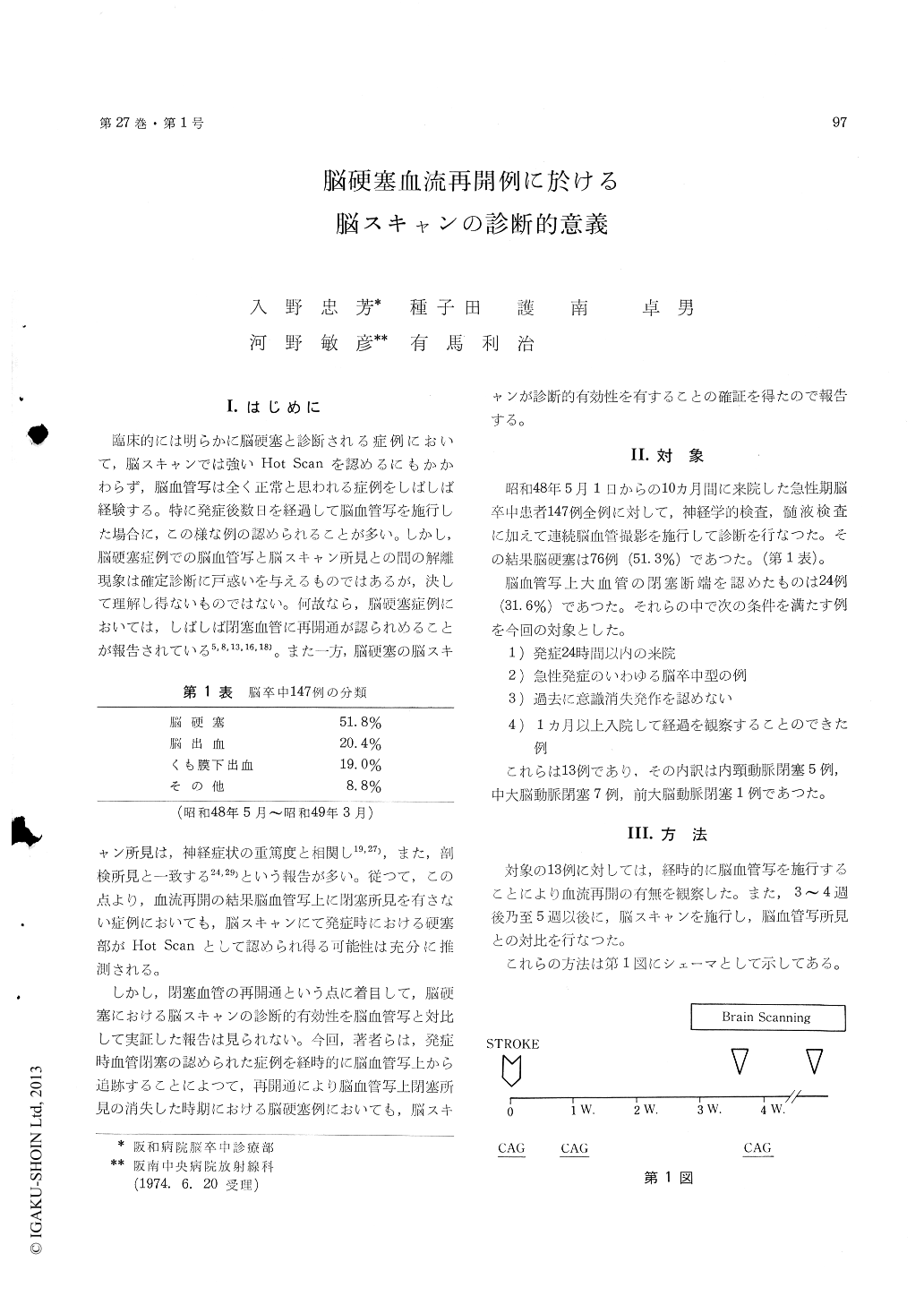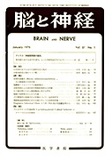Japanese
English
- 有料閲覧
- Abstract 文献概要
- 1ページ目 Look Inside
I.はじめに
臨床的には明らかに脳硬塞と診断される症例において,脳スキャンでは強いHot Scanを認めるにもかかわらず,脳血管写は全く正常と思われる症例をしばしば経験する。特に発症後数日を経過して脳血管写を施行した場合に,この様な例の認められることが多い。しかし,脳硬塞症例での脳血管写と脳スキャン所見との間の解離現象は確定診断に戸惑いを与えるものではあるが,決して理解し得ないものではない。何故なら,脳硬塞症例においては,しばしば閉塞血管に再開通が認られめることが報告されている5,8,13,16,18)。また一方,脳硬塞の脳スキャン所見は,神経症状の重篤度と相関し19,27),また,剖検所見と一致する24,29)という報告が多い。従つて,この点より,血流再開の結果脳血管写上に閉塞所見を有さない症例においても,脳スキャンにて発症時における硬塞部がHot Scanとして認められ得る可能性は充分に推測される。
しかし,閉塞血管の再胴通という点に着目して,脳硬塞における脳スキャンの診断的有効性を脳血管写と対比して実証した報告は見られない。今回,著者らは,発症時血管閉塞の認められた症例を経時的に脳血管写上から追跡することによつて,再開通により脳血管写上閉塞所見の消失した時期における脳硬塞例においても,脳スキャンが診断的有効性を有することの確証を得たので報告する。
In thirteen patients with the major cerebralarteial occlusion demonstrated by cerebral angio-graphy, angiographies were repeated to inspectrecanalization, and brain scans were performed at3-4 weeks and/or more than 5 weeks after thestroke. Five cases demonstrated recanalizationwithin seven days after the onset. All cases afterrecanalization showed increased uptake of Tc-99mwith brain scans perfomed at 3-4 weeks after thestroke.
In spite of diagnostic value in the acute stage,aingiographies sometimes do not provide diagnosticinformation in the chronic stage because of fre-quent arterial recanalization. On the other hand,brain scans frequently provide diagnostic infor-mation even in the chronic stage. Consideringthe mechanism of high uptake of radioisotope inbrain scans, it may be natural that findings ofbrain scans accurately reflect brain tissue damagecaused by ischemia with or without arterial re-canalization. Brain scans frequently enable "retro-spective" diagnosis of cerebral infarction even atthe chronic stage.

Copyright © 1975, Igaku-Shoin Ltd. All rights reserved.


